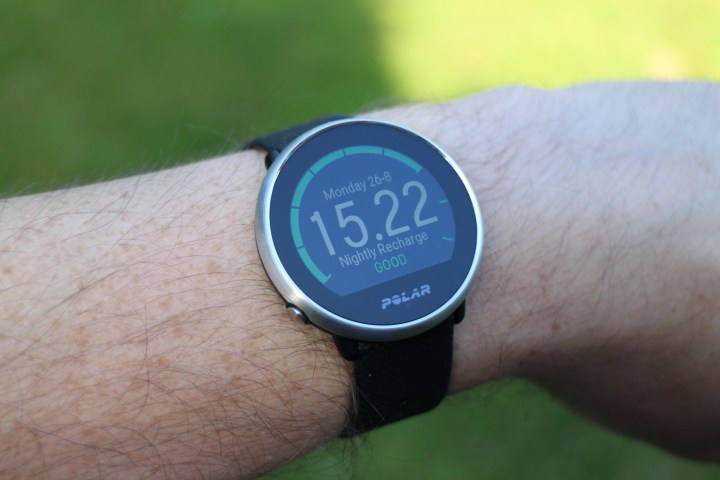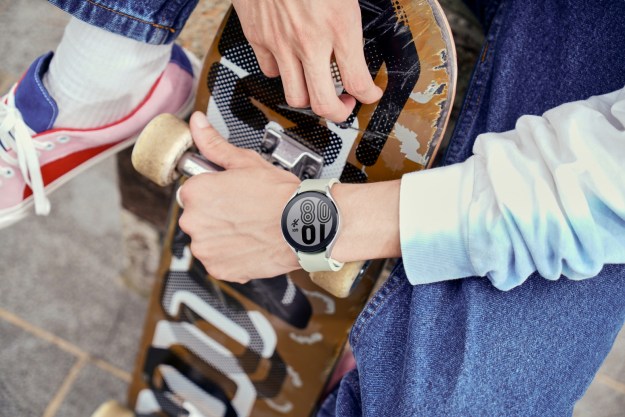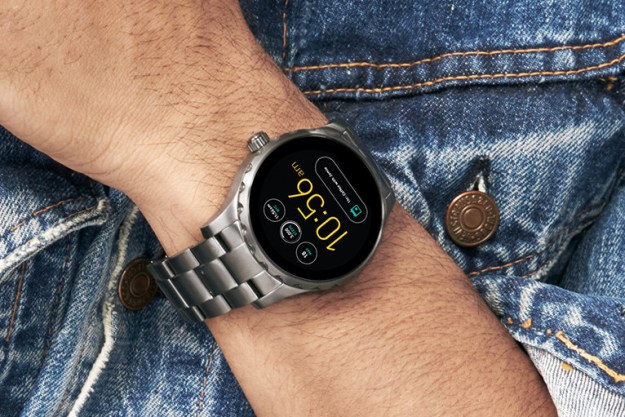
Modern life sometimes feels like a competition to see who can be the busiest. It’s tough finding time to work out. Whether you’re snowed under with work or trying to juggle family and friends, when you’re tired and your free time gets squeezed, exercise is often the first thing that gets dumped from the expanding to-do list. I’ve tried out several fitness trackers over the years and I’ve gone through the same set of stages with every single one of them: I start out enamored and impressed by the new wave of data, potential insights, and the motivational prods, but I soon get disheartened by my failure to meet the goals, resentful of the digs at my inactivity, then I forget to charge it one night and I never wear it again.
After a deep-fried, gravy-soaked, biscuit-filled visit to the deep south, I resolved to get a little more exercise, and the Polar Ignite fitness watch arrived right on cue. This waterproof fitness wearable is packed with features, including heart rate tracking and GPS, folded into an inoffensively plain body that doesn’t look out of place outside the gym. Just like all the best smartwatches, it can also save you from having to slip that smartphone out of your pocket. But the focus of this $230 wearable is firmly on fitness.
Understated design

Polar has traditionally targeted the fitness fanatic with its wearables and many of its devices look unashamedly fitness-focused, with design a distant afterthought. The Polar Ignite is refreshingly slim and light with a subtle design that blends in easily whether you’re training, at work, or out for dinner. The round display sits inside a stainless steel bezel and there’s a textured, TPU wrist band with a stainless steel buckle. It comes in black, white, or yellow.
You are supposed to wear the Polar Ignite quite tightly and it should be at least a finger’s width back from your wrist bone in order to ensure the heart rate tracking is accurate. That’s further up than I’d generally wear a watch, so it took a little getting used to, but it did prove comfortable to wear — so much so that I could almost forget I was wearing it. During testing, I kept the Polar Ignite on 24 hours a day, even in the shower: it’s water resistant and can also track swimming as an activity.
It did prove comfortable to wear — so much so that I could almost forget I was wearing it.
There’s a single button on the left of the Polar Ignite, but you’ll mainly rely on the touchscreen to navigate the menus. While the screen is fairly bright and the colors are quite vivid it can be a little tricky to read in direct sunlight. It’s an IPS TFT display with a resolution of 240 x 204 pixels. There’s also no always-on display option, so you have to press the button or raise the watch to bring the display to life.
It generally comes on when it’s supposed to, but sometimes feels a little sluggish when I raise my wrist, leaving me to wait for a bit to find out the time. It can look a little jaggy because a lot of the on-screen graphics are curved, and the touchscreen isn’t the most responsive I’ve ever used, especially when sweaty. But, for the most part, it served fine and I rarely had any major problems.
In-depth fitness tracking
Like most fitness trackers, the Polar Ignite is accompanied by a smartphone app and connects to your phone via Bluetooth. You’ll have to manually sync the two every so often if you want to dig into the wealth of charts and insight that the Polar Flow app has to offer.
If you’re serious about training, then I think you’ll love Polar’s approach. The watch offers up at-a-glance data on your heart rate, sleep, training advice, latest training session, and progress towards your daily goal. The mobile app delves deeper, showing your activity broken down by day, week, or month with a series of impressive-looking, data-rich charts.

You have plenty of options for tracking different activities with the Polar Ignite and it also continually tracks your heart rate and assesses your sleep. It covers basics like running, walking, cycling, and swimming, but there are also profiles for cross-trainers, indoor cycling, treadmills, group exercise, yoga, and more. Since I haven’t been exercising much lately, I went with the lowest training background and level for my activity goals. You can tailor your goals according to your own ability level and training background, and there’s room for plenty of customization.
The sleep tracking is equally in-depth displaying your sleep for the night broken into segments for light, deep, REM, and interruptions. It gives you a regeneration rating and also prompts you to rate your sleep quality, though you can turn that off if you prefer. It’s tough to know how accurate this sleep tracking is as the report didn’t always tally with how I actually felt.
The heart rate tracking is accurate for the most part, but it’s always tricky to assess fitness tracker accuracy. I measured it against the WIWE, a clinical-grade electrocardiogram device, and it was generally within a beat or two of the correct reading. Nevertheless, the idea of using a fitness tracker is really to get you exercising more — and few people do anything with the data they collect.
GPS accuracy isn’t quite as impressive — it can record your route for a cycle or run but expect it to be a few meters out here and there. It’s nice to have GPS built-in as you can leave your phone at home; competitors, like the Fitbit Versa 2, rely on the connection to your phone for GPS.
Additional features and battery life
There were two extra features in the Polar Ignite that I particularly liked: The inactivity alert and the Serene breathing exercise. The inactivity alert kicks in when you’ve been sitting for too long, which is useful for anyone working at a desk all day. The breathing exercise is more interesting. It uses a simple on-screen graphic and timer to encourage you to focus on your breath and reduce your heart rate, and it can be very useful if you feel stressed. These are standard features on most fitness trackers and smartwatches, though.

Naturally, you can also choose to get notifications from your smartphone and set alarms with your Polar Ignite. Both work well, though I turned the notifications off to preserve battery life and my sanity.
You get a charging cradle with the Polar Ignite and there’s a 165mAh battery inside it. Polar suggests you can get up to 5 days in watch mode with continuous heart rate tracking and up to 17 hours in training mode with GPS on. In practice, it’s a little less, but not far away from the claim.
Is it worth buying?

At $230 the Polar Ignite has a lot of competition; there’s the Samsung Galaxy Watch Active, the Fitbit Versa 2, the Garmin Forerunner 45S, the Withings Steel HR Sport, and the list goes on and on. There’s no contactless payment support with the Polar Ignite and no apps or music, but it does have all the fitness tracking features you’re likely to want in a fairly stylish package. If you want to deep dive into stats and build an ambitious training schedule then Polar has you covered, but casual users looking for a little encouragement might be better off with something else.
At the end of a week or so of testing, I am disheartened to find that my training efforts have failed to meet the targets set. My average completion for the week was 56%. I’m also a little overwhelmed by all the data and uncertain what I’m meant to glean from it, other than the fact that I need to get off the couch a bit more. The Polar Ignite does what it sets out to do and I found it easy to wear and use, but I don’t think I’m the target audience. I’m not confident it can avoid the same fate as all the fitness trackers that graced my wrist before it, but that probably says more about me than the Polar Ignite.
Editors' Recommendations
- The best fitness apps for the Apple Watch
- Polar’s Ignite fitness watch puts a fire into workouts, sparks your recovery
- The best cheap fitness trackers of 2019


